Rio de Janeiro State is so much more than just its famous city.
Just an hour outside Rio, you’ll find serene colonial towns (like Paraty), lush rainforests (the Mata Atlantica), and islands that feel like hidden slices of paradise (Ilha Grande).
It’s a region full of surprises. Before I came here, I had no idea there were so many amazing things to see and do.
Here’s a selection of my favourite places to visit in Rio de Janeiro State.
Table of Contents
Toggle- 1. Rio de Janeiro City
- 2. Paraty
- 3. Petrópolis
- 4. Ilha Grande
- 5. Arraial do Cabo
- 6. Teresópolis & Serra dos Órgãos National Park
- 7. Búzios
- 8. Niterói
- 9. Angra dos Reis
- 10. Vale do Café (Coffee Valley)
- 11. Trindade
- 12. Praia do Sono
- 13. Cabo Frio
- 14. Itatiaia National Park
- 15. Visconde de Mauá
- 16. Mangaratiba
- 17. Barra de Guaratiba
- 18. Saquarema
- 19. Penedo
- FAQs
- When is the best time to visit Rio de Janeiro State?
- How safe is Rio de Janeiro State for travellers?
- What’s the best way to travel around Rio de Janeiro State?
- Do I need to speak Portuguese To Visit Rio de Janeiro?
- What currency is used in Rio de Janeiro?
- Final Thoughts
Need help planning your next trip? Hire me as your Personal Travel Planner!
1. Rio de Janeiro City
Rio de Janeiro is a place that leaves a lasting impression.
From the iconic Christ the Redeemer statue to the breathtaking views at Sugarloaf Mountain, this city is filled with bucket-list experiences.
Walk along the famous Copacabana Beach, where you can relax on the sand, try local snacks from beach vendors, or join a game of beach volleyball.
Take the cable car up to Sugarloaf Mountain, especially in the late afternoon, to capture unforgettable views of the city and coastline during sunset.
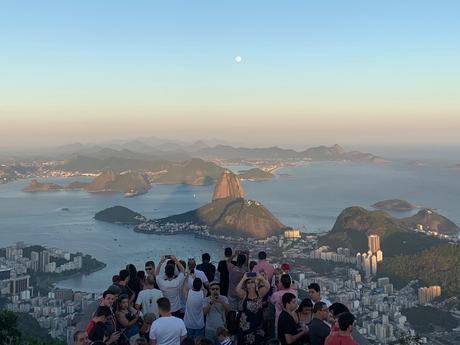
The Christ the Redeemer statue, one of the New Seven Wonders of the World, also offers a panoramic view of the city.
Stroll through the lively neighbourhood of Santa Teresa, known for its colourful steps at Escadaria Selarón.
I loved exploring Rio. Samba music pours out of bars on virtually every street, and the city’s laid-back but energetic vibe is incredible.
Sadly, various parts of the city struggle with high levels of crime. I stayed in Ipanema, which felt totally safe during the day. Wherever you are in Rio, it’s always best to take taxis at night.

Plan your trip for autumn (March-May) or spring (September-November) when the weather is warm but less humid.
Summer (December-February) is peak season, with several festivals but also larger crowds.
Booking tickets in advance for popular spots like Christ the Redeemer and Sugarloaf is a smart move to avoid long queues.
2. Paraty
Paraty is a beautifully preserved colonial town on the coast. Wander its cobblestone streets lined with colourful buildings, artisanal shops, and local restaurants serving up traditional Brazilian dishes.
The Historic Centre is a UNESCO World Heritage site, showcasing well-kept 18th-century architecture and a relaxed, charming vibe.
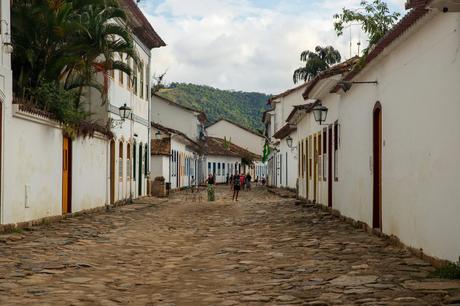
Take an island-hopping boat tour to visit secluded beaches and snorkel in clear waters. Many tours leave from the town’s harbour and offer lunch onboard.
You can also hike to nearby waterfalls, like Cachoeira Tobogã, for a refreshing dip in the forest complete with a natural water slide.
For a unique experience, visit during the Paraty Literary Festival (FLIP) in July.
This annual event draws writers, artists, and travellers from around the world, adding an extra layer of culture to this already captivating destination.
3. Petrópolis
Known as the “Imperial City,” Petrópolis is rich in history and offers a cool mountain climate that’s perfect for a day trip from Rio.
Start at the Imperial Museum, once the summer palace of Emperor Dom Pedro II.
The Crystal Palace, another iconic site, provides a glimpse into the city’s royal past and serves as a venue for local events.
The nearby Serra dos Órgãos National Park offers hiking trails with incredible mountain views.
4. Ilha Grande
Ilha Grande is a true tropical island paradise, with pristine beaches, lush rainforest, and no cars allowed.
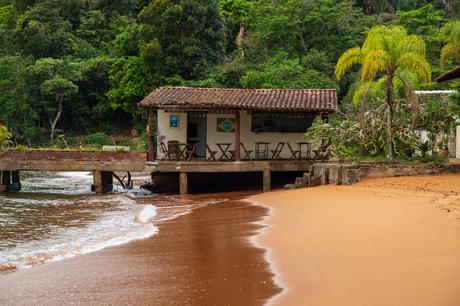
Head to Lopes Mendes Beach, often described as one of the best beaches in the world. It’s a long, curved stretch of immaculate soft white sand framed by jungle.
If you’re up for a challenge, the hike up Pico do Papagaio rewards you with panoramic views across the island.
I loved snorkelling on Ilha Grande, especially at Lagoa Azul, where there’s an amazing range of colourful marine life and calm waters with very little current.
Since there are no cars on the island, pack light and prepare to walk or take water taxis to get around.
5. Arraial do Cabo
Arraial do Cabo is a beach lover’s paradise, with white sands and turquoise waters. It’s a top diving and snorkelling destination.
Praia do Forno, accessible by a short hike or boat ride, offers picturesque views and calm seas.
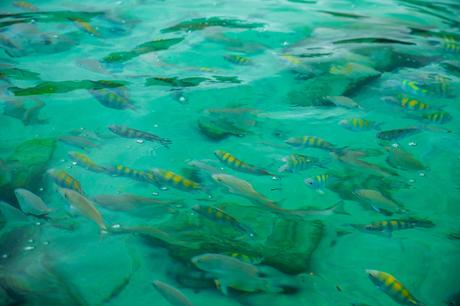
Another highlight is Pontal do Atalaia, where you’ll find postcard-perfect beaches and panoramic lookout points.
Arrive early, especially on weekends, to enjoy the quieter morning atmosphere and secure a spot on the beach.
Visit in summer or autumn for warm weather and optimal diving conditions.
6. Teresópolis & Serra dos Órgãos National Park
Teresópolis is a scenic mountain town located near Serra dos Órgãos National Park, which is famous for its jagged peaks and beautiful hiking trails.
The Pedra do Sino trail is one of the park’s highlights, offering panoramic views at the summit. It’s a long and challenging hike, but the reward is worth the effort.
Dedo de Deus is a striking rock formation that resembles a “finger of God” and is one of the most iconic sights in the region.
The park is also home to a variety of waterfalls and natural pools, perfect for cooling off after a hike.
Part of the Atlantic Forest biome, the park is a hotspot for birdwatching, with many endemic species visible along the trails.
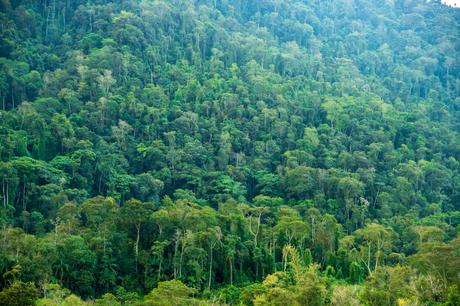
Winter (June-August) is ideal for visiting Teresópolis and hiking in Serra dos Órgãos National Park, with cooler temperatures and clearer skies.
Mornings can be misty, so it’s best to start your hikes later in the day for better visibility.
Be sure to pack plenty of water and sunscreen, as the trails can be demanding and exposed in parts. Also, remember to bring layers, as temperatures can dip, especially at higher altitudes.
7. Búzios
Búzios is a charming beach town with a lively atmosphere and over 20 picturesque beaches to explore.
Start at Rua das Pedras, the town’s lively main street, lined with boutiques, cafes, bars, and art galleries. It’s a perfect spot to shop, dine, and people-watch by day, and bar-hop by night.
Geribá Beach is a hotspot for surfing, known for its consistent waves. While it’s lively and fun, it can get crowded, particularly during the high season.
For a more tranquil experience, head to Praia da Ferradura, known for its calm waters, which are perfect for swimming, kayaking, or a peaceful day at the beach.
Summer is the best time to visit if you’re looking to soak up the sun and explore the vibrant nightlife.
Exploring on foot or by bike lets you fully immerse yourself in Búzios’s laid-back beach culture. The town has many narrow streets, so this is also the most practical way to get around.
8. Niterói
Just across Guanabara Bay from Rio, Niterói is known for its blend of modern architecture, natural beauty, and relaxed vibe.
The Niterói Contemporary Art Museum, designed by Oscar Niemeyer, is a must-see. It has a futuristic design and sweeping bay views from its location at the tip of a small peninsula.
Praia de Itacoatiara is a favourite for surfers, with waves that attract both professionals and beginners. It’s also a great spot for swimming, with its clear waters and natural scenery.
For a panoramic view of Rio and the coastline, head to Parque da Cidade, where you can hike or paraglide.
Niterói is best visited in autumn or spring when the weather is warm but not too humid. The ferry ride from Rio provides beautiful views of the bay, making the journey part of the adventure.
With its unique attractions and laid-back feel, Niterói is a great day trip or weekend getaway from Rio de Janeiro.
9. Angra dos Reis
Angra dos Reis is both the name of a town and a wider region made up of over 300 islands.
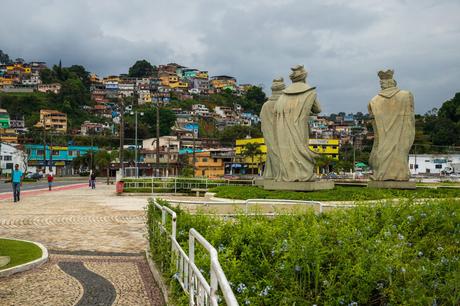
These islands are ideal for snorkelling, swimming, and simply soaking up the sun.
Ilha Grande is the largest and offers beautiful beaches and scenic hiking trails (see above). But it’s by no means the only island worth visiting.
A boat tour is the best way to explore Angra dos Reis, with stops at popular islands like Ilha Grande, Cataguases Island, and Botinas Island, each offering secluded beaches and crystal-clear waters.
10. Vale do Café (Coffee Valley)
Vale do Café, or Coffee Valley, is a scenic region steeped in history and tradition. It’s home to historic coffee farms and lush landscapes.
Touring a coffee farm here is a great way to learn about Brazil’s coffee heritage, from the cultivation process to the roasting methods, and enjoy tastings.
The towns of Vassouras and Valença are important hubs in the region. Each offers attractive colonial architecture, historic town squares, and local markets filled with artisanal goods.
Many farms in the region welcome visitors for guided tours and tastings, where you can sample freshly brewed coffee and learn about traditional production methods.
Check ahead to book farm tours, especially during the harvest season (May-August), to get the full experience of coffee picking and production.
11. Trindade
Trindade is a laid-back beach village near Paraty known for its unspoiled natural beauty and peaceful atmosphere.
Praia do Meio is a popular spot with gentle waves, ideal for a relaxing day by the sea, though it can get busier during peak season.
One of my favourite things I did in Trindade was hiking to the Cachadaço natural pool. This hidden gem is located a short distance from Praia do Meio and has calm, clear water surrounded by rocks.
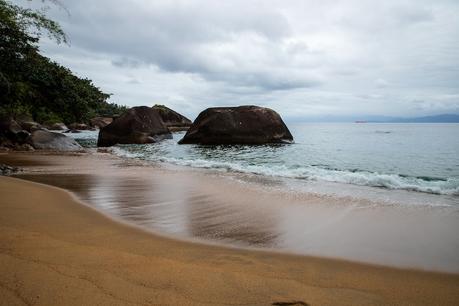
Trindade has several other trails that lead through lush forests and offer beautiful views of the coast.
If you’re up for an adventure, try the challenging trail to Pedra da Macela, where you’ll be rewarded with panoramic ocean views.
12. Praia do Sono
Praia do Sono is a real hidden gem. It’s a secluded beach accessible by boat or a scenic hiking trail from nearby Laranjeiras.
The beach is surrounded by lush forest and offers a tranquil escape with soft sand and clear waters perfect for swimming.
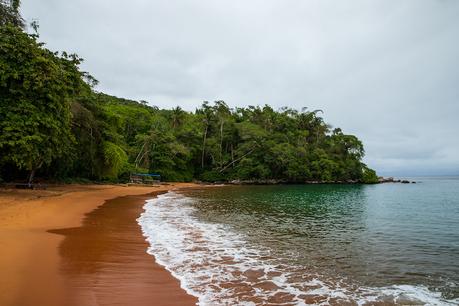
Camping on Praia do Sono is a popular option, especially for those looking to disconnect. There are basic camping facilities available.
Come prepared with the essentials for a comfortable stay, as amenities are fairly limited. Remember to bring cash, as there are no ATMs.
13. Cabo Frio
Cabo Frio is a beach town famous for its white dunes and crystal-clear waters.
Praia do Forte is one of the top beaches here, with soft sand and gentle waves. However, it can get crowded, especially during peak season.
The nearby Japanese Island offers a more secluded beach experience with calm waters, scenic views, and lush vegetation, perfect for a peaceful day away from the crowds.
Beyond the beaches, Cabo Frio has a relaxed vibe with local markets, cafes, and a burgeoning art scene. Take a stroll through the town and pick up unique handmade crafts.
Summer is the best time to enjoy Cabo Frio’s beaches, though weekdays tend to be less crowded than weekends.
14. Itatiaia National Park
Itatiaia National Park, Brazil’s first national park, is a nature lover’s paradise, known for its diverse flora, fauna, and birdlife.
It’s home to over 400 species of birds, and a variety of other wildlife. The park also offers fantastic views and several excellent hikes.
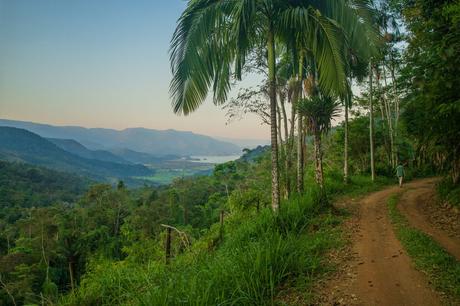
Pico das Agulhas Negras is one of Brazil’s highest peaks. It’s a fairly challenging climb with some of the most rewarding views in the region.
The lower areas of the park are rich with waterfalls, natural pools, and scenic trails, perfect for those looking to enjoy a more relaxed day out in nature.
Birdwatching is also popular here, with species like toucans and colourful tanagers frequently spotted among the trees.
Winter is the best time to visit for clear skies, especially if you plan to hike the higher trails.
A guide is recommended for the more difficult treks, like Pico das Agulhas Negras. Guides are available at the park’s visitor centre.
15. Visconde de Mauá
Visconde de Mauá is a mountain village tucked into the lush hills of Rio de Janeiro State.
Known for its eco-lodges, artisan shops, and natural beauty, it’s a peaceful alternative escape.
The Escorrega Waterfall is a local favourite, where you can swim in the natural pools and slide down the smooth rocks into the cool water.
Hiking trails around Visconde de Mauá lead you through dense forests and scenic views.
The area is also popular for its local markets, where you can find handmade crafts and taste regional delicacies. Don’t miss the chance to try local cheeses, chocolates, and artisanal honey.
16. Mangaratiba
Mangaratiba is a coastal town known for its tranquil beaches and as a gateway to the islands of Ilha Grande Bay.
It’s an ideal starting point for boat trips to explore the beautiful, lesser-visited beaches and islands that dot the unspoilt coastline.
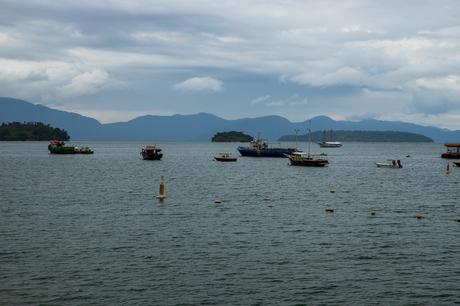
Praia do Saco and Guaíba Beach are popular local spots where you can relax in a peaceful setting.
Taking a boat tour from Mangaratiba is a convenient way to reach nearby islands, including Ilha Grande.
Many tours offer snorkelling stops, allowing you to explore the colourful underwater life around these pristine islands.
17. Barra de Guaratiba
Barra de Guaratiba is a quiet coastal area near Rio de Janeiro, known for its rugged hiking trails and hidden beaches.
The Pedra do Telégrafo trail is particularly popular, offering panoramic views over the coastline and a famous photo spot on a cliff edge. It’s a moderate hike, but the views at the top are worth the effort.
The area’s beaches, like Praia do Perigoso and Praia do Meio, are more secluded and less crowded, ideal for a peaceful day by the water.
However, these beaches can be a bit tricky to access, requiring a hike or boat ride.
The local beachside restaurants serve up a range of delicious fresh fish dishes and other traditional Brazilian fare.
18. Saquarema
Known as Brazil’s surfing capital, Saquarema draws beach lovers and wave riders from around the world.
Itaúna Beach is the top spot for surfing, with consistent waves that attract both pros and beginners alike.
For a more relaxed vibe, head to other local beaches to soak up the sun and watch the surfers.
The town’s landmark, the Igreja de Nossa Senhora de Nazareth, sits atop a hill overlooking the ocean, providing a picture-perfect view.
Saquarema is a year-round destination, with summer usually offering the best conditions for surfing.
19. Penedo
Penedo is a unique Finnish-inspired village in Rio de Janeiro State. Known for its quaint wooden houses and charming atmosphere, it’s one of the few places in Brazil with this distinctive architecture.
The town’s main area, known as “Pequena Finlândia” (Little Finland), is full of colourful Finnish-style architecture and cosy cafes.
Outdoor activities like hiking and waterfall visits are popular, with trails leading to beautiful spots such as the Cachoeira de Deus waterfall.
The area is ideal for those who enjoy nature with a side of cultural charm, and its shops are perfect for picking up local crafts and treats.
Penedo is also a food lover’s paradise, with its famous artisanal chocolate shops offering a sweet taste of the village’s Finnish influence.
Be sure to try the local chocolate and explore Penedo’s town centre for a taste of Brazilian-Finnish fusion.
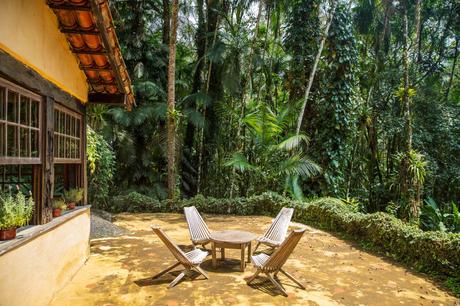
FAQs
When is the best time to visit Rio de Janeiro State?
The best time to visit Rio de Janeiro is between March and May or September and November when the weather is pleasant and crowds are smaller.
How safe is Rio de Janeiro State for travellers?
The state of Rio de Janeiro is generally pretty safe overall, though it’s wise to stay alert, particularly in Rio itself, and anywhere during the evening when risks can be higher. Always keep an eye on your belongings and don’t flash expensive items.
What’s the best way to travel around Rio de Janeiro State?
The best way to travel around Rio de Janeiro State is by renting a car, which offers flexibility for reaching remote beaches and mountain towns. Buses and ferries are also reliable for popular destinations.
Do I need to speak Portuguese To Visit Rio de Janeiro?
Knowing a bit of basic Portuguese (or Spanish) is helpful in Rio de Janeiro, especially in rural areas where English isn’t widely spoken. It’s not essential, though, especially if you have a translation app like Google Translate.
What currency is used in Rio de Janeiro?
The currency used in Rio de Janeiro is the Brazilian Real (BRL). While ATMs are widely available, it’s best to carry cash in smaller towns where card payments may be less common.
Final Thoughts
The state of Rio de Janeiro offers an incredible blend of attractions, from world-famous landmarks and stunning beaches to lush mountains and historic towns.
Embrace both the iconic spots and the lesser-known gems for a truly unforgettable experience.
Check out some of my other posts on Brazil and let me help you plan an unforgettable trip!

